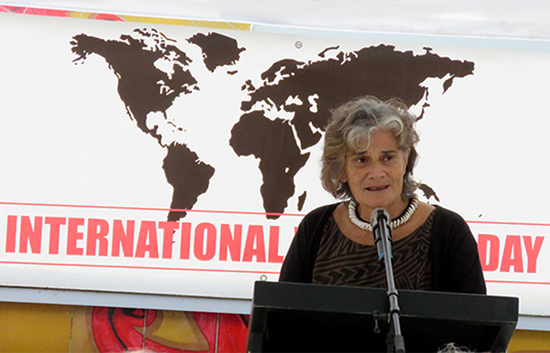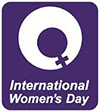
Ellie van Baaren
COMMENTARY: In September 1995, Pacific leaders and activists joined the rest of the world in Beijing, China, for the Fourth World Conference on Women. Representatives from 12 Pacific Island countries and territories were among the 17,000 representatives of 189 governments and 30,000 activists that committed to the Beijing Declaration and Platform for Action and its blueprint for advancing women’s rights.
Twenty years later, we have seen progress across the Pacific, but those gains have been modest and they are far from enough.
More Pacific women and men than ever before are standing up and speaking out, urging their families and communities, their churches and cultural leaders, to change how they treat the women and girls in their lives, and pressuring their governments to take concrete action towards making gender equality a reality.
Nine Pacific countries and territories now have legislation in place that criminalises domestic violence; more women than ever are standing in elections, garnering votes and voting themselves; more women are getting an education; and more women are getting access to quality healthcare and economic opportunities.
At the international level, Pacific governments have demonstrated leadership on gender, often speaking in one voice to push for more formal recognition of the effects of climate change on women and girls, as well as recognition of sexual and reproductive health and rights and LGBTI rights.
We are still, however, a long way from living up to the promises made in Beijing 20 years ago. The Pacific still has the world’s highest recorded levels of violence against women and girls and the world’s lowest levels of women in parliament. Women are largely missing from decision-making processes at all levels and too many women still have limited access to decent work.
Power imbalances
Gender inequality goes beyond the statistics. Every day we are each faced with evidence of the discrimination, violence, and power imbalances that continue to affect women of all ages and that are a blight on the economic and social progress of every Pacific Island country and territory.
We see it in every news story of a woman beaten or raped by someone who professes to love her, in every election that once again puts only a handful of women – or none at all – into parliament.
We see it in every girl who is cannot attend school or does not receive vital healthcare because her family has limited resources and prioritises her brother’s education and health over hers. And we see it every time a pastor, cultural or community leader uses his or her speaking platform to admonish women for what they wear, how they act or what they demand.
This cannot continue. We must make 2015 the turning point for the Pacific when it comes to gender equality.
This year, the world adopts a new development framework to replace the Millennium Development Goals and it is crucial that Pacific leaders take the lead in ensuring there is a stand-alone goal on women’s rights, gender equality and the empowerment of women, and that gender priorities are addressed in each and every goal.
Furthermore, Pacific leaders need to commit to fully implementing the international treaties and national laws that are already in place, while also developing further policies and programmes that will make a real difference in the everyday lives of women.
But action by Pacific leaders is not enough. We need all Pacific Islanders to play their part – women and men, boys and girls, church leaders, sporting figures and the media. For gender equality is not only an issue for Pacific women, it is everybody’s business.
Together we can fulfill the promise of Beijing in 1995. The year 2030 is our end point; the expiration date for gender inequality.
Progress for women, after all, is progress for all.
This work is licensed under a Creative Commons Attribution-NonCommercial 3.0 New Zealand Licence.





